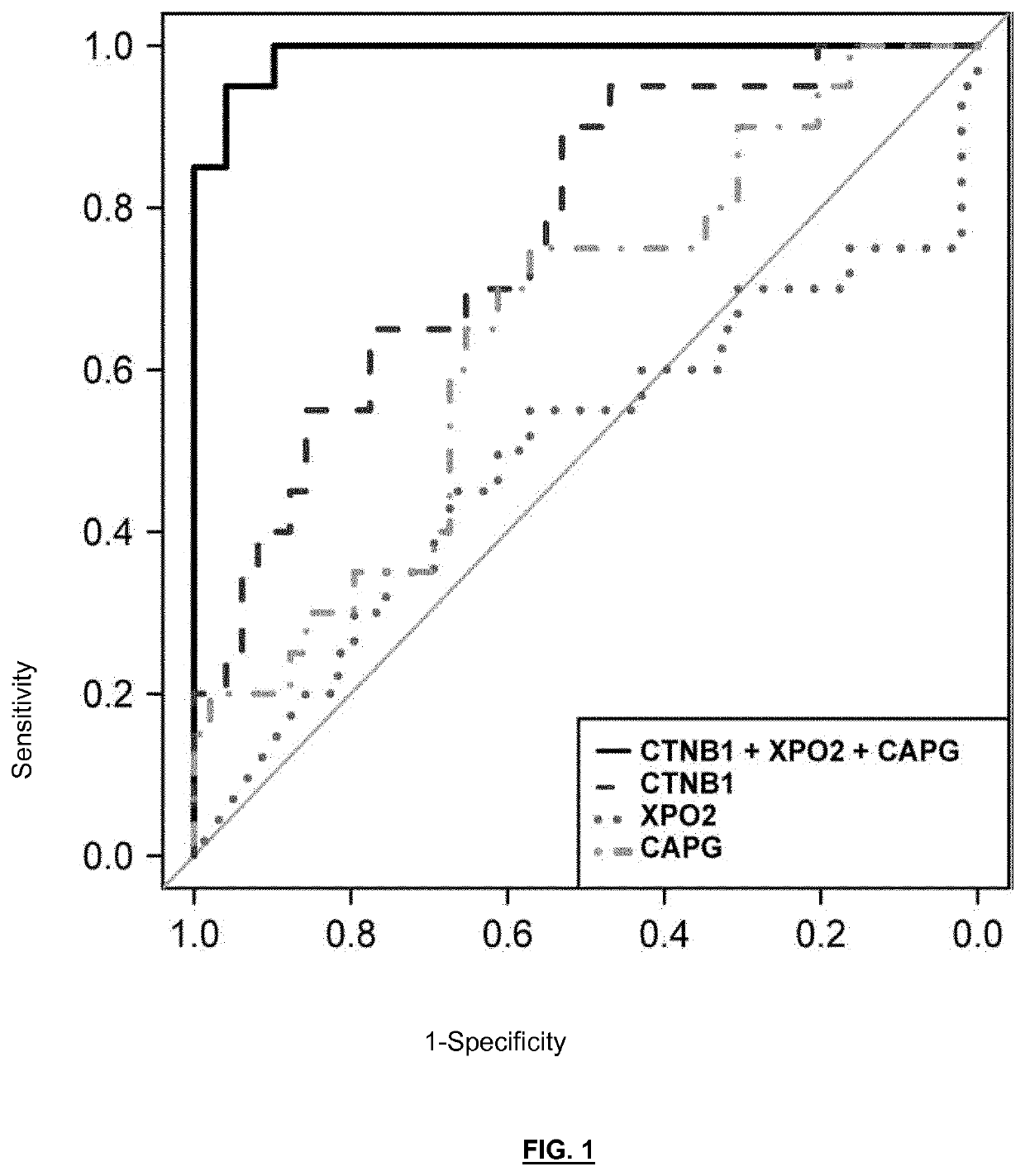Ctnb1 as a marker for endometrial cancer
a technology of endometrial cancer and ctnb1, which is applied in the direction of pathological references, instruments, material analysis, etc., can solve the problems of uterine perforation, uterine perforation, hemorrhage, and the associated inadequate sampling rate of 8% and 15% of the process, and achieves high sensitivity
- Summary
- Abstract
- Description
- Claims
- Application Information
AI Technical Summary
Benefits of technology
Problems solved by technology
Method used
Image
Examples
example 1
s of Diagnosis and Prognosis of EC in Exosomes Derived from Uterine Fluid, and in the Uterine Fluid
[0267]1. Samples, Reagents and Methods
[0268]1.1 Patients and Sample Description
[0269]Patients were recruited at three different institutions: HUVH (Hospital Universitari Vail d'Hebron, Barcelona, Spain), HUAV (Hospital Universitari Arnau de Vilanova, Lleida, Spain) and UMCF (University Medical Center of Freiburg, Freiburg, Germany). Each participating institution obtained ethical approval and samples were obtained after the participants signed the informed consent.
[0270]Uterine aspirates (UAs) were obtained by aspiration with a Cornier Pipelle (Gynetics Medical Products). Samples were placed in 1.5 mL tubes and kept on ice through all the processing which included addition of phosphate buffered saline (PBS) in a 1:1 ratio (v / v), gently pipetting of the sample, and centrifugation at 2500 g (4° C.) in a F45-30-11 rotor (Eppendorf Microcentrifuge 5417R) for 20 min to remove the cellular f...
example 2
of EC by Distinguishing EEC (EC1) from NEEC (EC2) Cases in a Cohort of 116 Patients, in Uterine Aspirates
[0301]1. Samples, Reagents and Methods
[0302]1.1 Patients and Sample Description
[0303]A total of 116 women were recruited in the Vail Hebron University Hospital (Barcelona, Spain), the Hospital Universitari Arnau de Vilanova (Lleida, Spain) and the University Medical Center Freiburg (Freiburg, Germany) from 2012 to 2015. Informed consent forms, approved by the Ethical Committees of each Hospital, were signed by all patients. All women entered the EC diagnostic process due to EC suspicion, i.e., presentation of aa abnormal uterine blooding (AUB) and / or a thickness of the endometrium higher than 4 mm for postmenopausal women and 8 mm for premenopausal women based on the results of a transvaginal ultrasonography. From the 116 women, 69 were diagnosed with EC, including 49 endometrioid EC (EEC) and 20 non-endometrioid serous ECs (SEC or NEEC). The remaining 47 women were non-EC women ...
PUM
 Login to View More
Login to View More Abstract
Description
Claims
Application Information
 Login to View More
Login to View More - R&D
- Intellectual Property
- Life Sciences
- Materials
- Tech Scout
- Unparalleled Data Quality
- Higher Quality Content
- 60% Fewer Hallucinations
Browse by: Latest US Patents, China's latest patents, Technical Efficacy Thesaurus, Application Domain, Technology Topic, Popular Technical Reports.
© 2025 PatSnap. All rights reserved.Legal|Privacy policy|Modern Slavery Act Transparency Statement|Sitemap|About US| Contact US: help@patsnap.com

